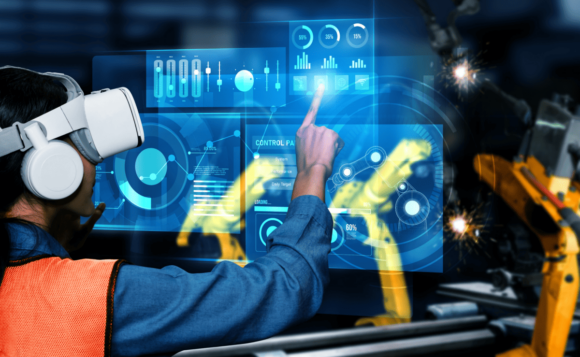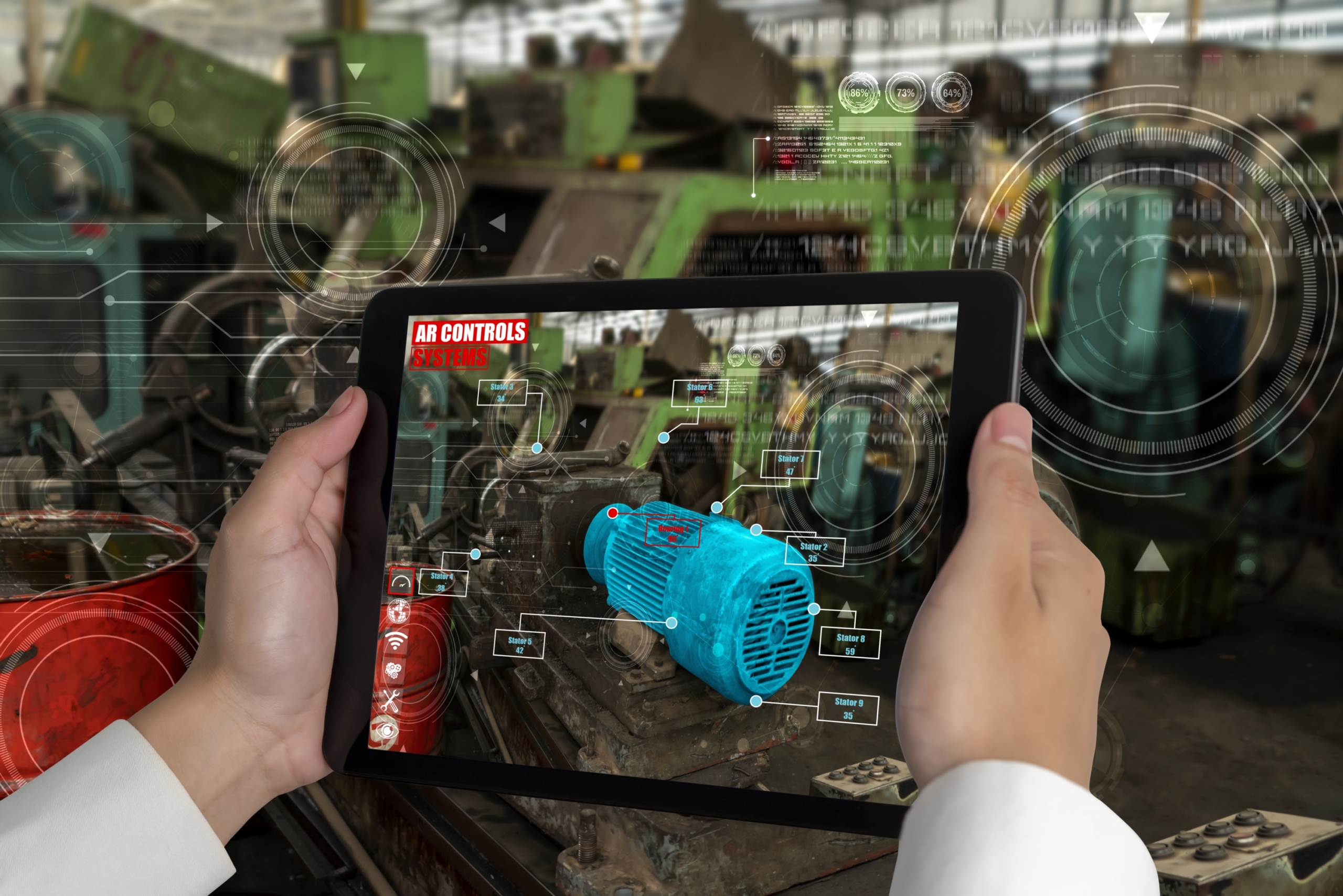
Just envision a manufacturing environment where every employee can execute tasks, acquire new skills, and thoroughly explore intricate mechanisms without any risk to their health. What if someone makes a mistake? No problem—simply retry, akin to playing a computer game. How is this possible? In the swiftly evolving realm of technology, the convergence of Industry 4.0 and the VR/AR stack is demonstrating its transformative impact!
Understanding Industry 4.0
Industry 4.0 represents a profound shift in the manufacturing landscape, driven by the integration of cutting-edge technologies. It embraces the principles of connectivity, automation, and data exchange to create intelligent systems capable of real-time decision-making. Key components include IoT, which interconnects physical devices, AI, enabling machines to learn and adapt, and data analytics for processing vast amounts of information.
In the Industry 4.0 framework, machines communicate seamlessly with each other, forming a networked ecosystem that optimizes processes, reduces waste, and enhances overall efficiency.
Enhancing Human-Machine Interaction
The incorporation of VR and AR into Industry 4.0 significantly amplifies human-machine interaction. VR immerses users in a computer-generated environment, allowing them to engage with machinery and systems in a simulated but realistic space. AR overlays digital information onto the physical world, providing real-time insights and enhancing the operator’s understanding of the operational environment.
These technologies empower workers to control and monitor machinery intuitively, reducing the learning curve and enabling more efficient and safer operations. By fostering a symbiotic relationship between humans and machines, Industry 4.0 with VR/AR integration drives productivity and innovation.
Read also: Remote Inspection and Control App
Realizing Smart Factories and Processes
Smart factories, a cornerstone of Industry 4.0, leverage VR and AR technologies to visualize and optimize manufacturing processes. VR simulations offer a dynamic, 3D representation of the production line, allowing operators to monitor every aspect in real-time. AR, on the other hand, superimposes relevant data onto physical objects, aiding in quality control and process optimization. With the ability to detect anomalies promptly, these technologies contribute to predictive maintenance, reducing downtime and ensuring continuous operation. The result is a more agile and responsive manufacturing ecosystem that adapts to changing demands and maximizes resource utilization.
Training and Skill Development
In the Industry 4.0 era, workforce skills need to align with the demands of a highly automated and interconnected environment. VR and AR play a pivotal role in this paradigm shift by offering immersive training solutions. Virtual simulations replicate real-world scenarios, enabling workers to practice tasks without the risks associated with live operations.
This hands-on, risk-free training accelerates the learning curve, enhances problem-solving skills, and instills confidence in workers. Additionally, VR/AR training can be customized to address specific industry challenges, ensuring that the workforce is equipped to handle diverse and evolving scenarios, contributing to a more versatile and adaptable workforce.

The fusion of Industry 4.0 and the VR/AR stack not only revolutionizes manufacturing and industry processes but also reshapes the nature of work and skills required. As we navigate the complexities of the fourth industrial revolution, this symbiotic relationship empowers industries to achieve new levels of efficiency, innovation, and competitiveness.
The immersive experiences provided by VR and AR, coupled with the intelligent systems of Industry 4.0, pave the way for a future where human potential is augmented by technology, creating a dynamic and responsive industrial landscape. The transformative impact of this integration extends far beyond the shop floor, influencing the very fabric of how we approach production, training, and problem-solving in the digital age.



